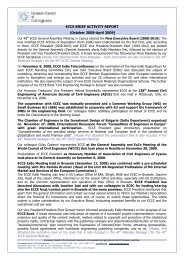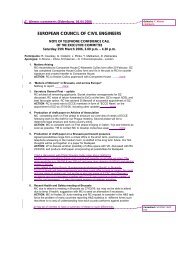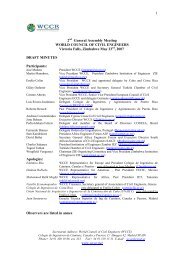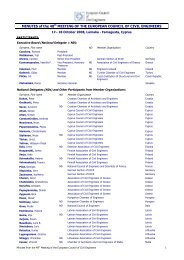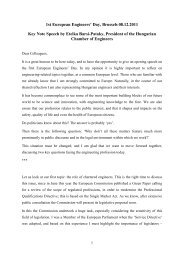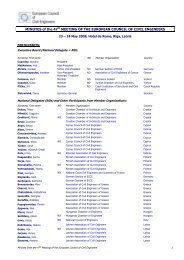A Closer Look at Prevailing Civil Engineering Practice - European ...
A Closer Look at Prevailing Civil Engineering Practice - European ...
A Closer Look at Prevailing Civil Engineering Practice - European ...
You also want an ePaper? Increase the reach of your titles
YUMPU automatically turns print PDFs into web optimized ePapers that Google loves.
A <strong>Closer</strong> <strong>Look</strong> <strong>at</strong> <strong>Prevailing</strong> <strong>Civil</strong> <strong>Engineering</strong> <strong>Practice</strong>, Wh<strong>at</strong>, Why and How<br />
Vincent T. H. CHU<br />
4. Wh<strong>at</strong> is the purpose of bolt tightening sequence in flanged joints<br />
Bolted flange joint is widely used in w<strong>at</strong>ermains. In essence, a bolt axial<br />
tension is applied by the torque control method. The preload values are<br />
recommended by gasket suppliers to control gasket crushing and to<br />
achieve proper gasket se<strong>at</strong>ing stress. A proper bolt tightening sequence in<br />
flanged joints is essential to control stress vari<strong>at</strong>ion in flange joint<br />
components. Otherwise, leakage occurs <strong>at</strong> flanged pipe joints during<br />
oper<strong>at</strong>ing conditions.<br />
Most joint surface of joints is not completely fl<strong>at</strong>. The sequence of bolt<br />
tightening exerts a huge effect on the resulting preloads. Since joints<br />
containing gaskets have a compar<strong>at</strong>ively low compressive stiffness, bolt<br />
preloads in such joints are particularly sensitive to the tightening sequence.<br />
Owing to the compression of joint surfaces, tightening one bolt close to<br />
another pre-loaded bolt will affect the preload gener<strong>at</strong>ed by the<br />
firstly-tightened bolt. A proper bolt tightening sequence ensures th<strong>at</strong> an<br />
even preload distribution is achieved in the flanged joint.<br />
Fig. 10.1 Bolt tightening sequence in flanged joints<br />
5. Wh<strong>at</strong> is the reason of retightening in flanged joints<br />
Traditional gaskets are non-elastic in n<strong>at</strong>ure. As such, this property of<br />
gasket results in a reduction in the bolt’s preload as time goes by. In fact,<br />
this phenomenon usually takes place shortly after install<strong>at</strong>ion leading to<br />
bolt relax<strong>at</strong>ion. To reduce the effect of bolt relax<strong>at</strong>ion which may cause<br />
subsequent w<strong>at</strong>er leakage during oper<strong>at</strong>ion, retightening the bolts is<br />
71








